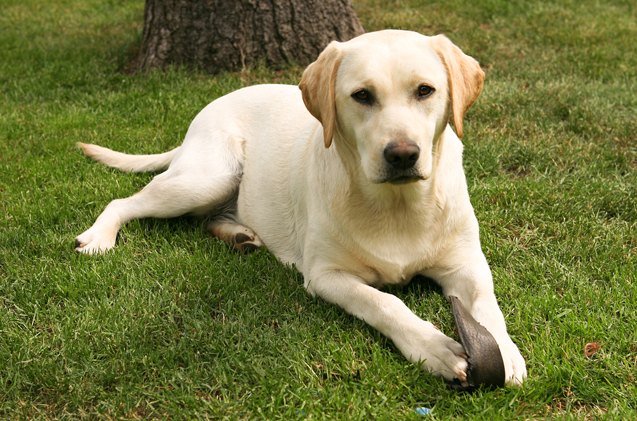Have you recently noticed a little more padding than there used to be when petting your pup? Does their collar appear a tad snugger than it was just a few weeks ago? As loving dog parents, we are generally the first to notice when something changes, including changes in our best friend’s weight. But when should you be concerned about those added pounds?While a little extra weight may initially seem unimportant, sudden weight gain in dogs can sometimes be a warning sign of an underlying medical issue. In this post, I’ll help you uncover the possible reasons for your dog’s growing waistline, including when to see a veterinarian. Plus, I’ll offer some actionable tips to help keep your pup at a healthy weight.Recognizing Sudden Weight Gain in Your DogIt can sometimes be tricky to spot changes in your dog’s weight based on looks alone, especially if they have a lot of fur. That’s why it’s important to take time regularly to do a quick check on your dog’s body condition. Here are some practical ways to do this:The Scale: If your dog isn’t too large, the obvious answer is to use a scale. Regularly weighing your dog at home will give you concrete numbers to check. Most veterinarians will also allow their clients to come in and use their scale between checkups.The Feel Test: If your dog is a healthy weight, you should be able to easily feel their ribs when running your hands along their body without pressing too hard. If you’re looking down at their body from above, you should be able to see a visible waist tuck.The Look Test (with Caution): Look at their overall body shape. Are they looking rounder, especially around the belly? Do they appear to be losing definition?Keep in mind that relying on how they look may be misleading, causing you to miss signs of trouble. Long-haired breeds can hide extra weight under their fur. Seasonal changes in your dog’s coat thickness may also give the illusion that they have gained weight when they haven’t. Your best approach is not to rely on visual appearance alone.Not worried about your dog’s weight right now? This is the perfect time to weigh them and get a solid baseline. By knowing their healthy weight, you’ll have something to compare it to if you are concerned that there may be a worrisome change in the future.Potential Reasons Your Dog is Gaining WeightWhen our dogs start to pack on the pounds unexpectedly, it’s natural to wonder what’s happening. Especially because some potential explanations serve as a warning sign of something far more serious.Often, the answer lies in a simple imbalance between the calories they consume and the energy they expend each day. However, other factors, including changes in their activity levels and even underlying health conditions, can also play a role.Let’s look at some of the most common reasons for sudden weight gain in dogs.Dietary ChangesArguably, the most common reason for a dog’s growing waistline is an increase in the number of calories they eat with no matching change to their activity level (or a decrease in activity with no change to their meals). This can manifest in several ways, such as:A recent switch to a food with a higher calorie density, even if the portion size remains the sameAn increase in the frequency or size of treatsThe addition of table scraps and other human foods to their dietMiscommunication between family members about whether/how much your dog has eatenIt’s crucial to remember the importance of correctly measuring your dog’s food portions to avoid unintentional overfeeding. Check the packaging of your dog’s food for the feeding guidelines, as this is unique to each brand and formula.Lower Activity LevelsEven if your dog’s diet hasn’t changed, a reduction in their exercise levels could lead to weight gain. Just like with humans, fewer calories burned means more stored as fat.There are several reasons why a dog’s activity levels may decrease. As dogs get older, they naturally slow down. Injuries or chronic pain, such as canine arthritis, can limit their mobility and ability to be as active as they once were at their prime. They may also be less active due to changes in your lifestyle or daily routine. For example, if your work schedule is suddenly hectic, it may lead to fewer or shorter walks.Finally, consider the environmental factors that could impact their willingness or ability to stay active. For example, extreme weather conditions like sweltering summer heat or chilly winter temperatures may result in less outdoor playtime.Underlying Medical ConditionsWhile the delicate balance between diet and exercise is often the primary culprit, sudden weight gain can sometimes be a warning sign of an underlying medical condition. Several conditions can lead to weight gain, and as responsible dog parents, we must be aware of these possibilities: Hypothyroidism: A condition where the thyroid gland doesn’t produce enough thyroid hormone, often slowing a dog’s metabolism, leading to weight gain even with a normal diet Cushing’s Disease (Hyperadrenocorticism): An overproduction of cortisol, which can increase appetite, alter fat distribution (often leading to a pot-bellied appearance), and cause weight gain Heart Disease: This sometimes leads to fluid retention, which may manifest as a bloated abdomen or the appearance of rapidly gaining weightOrgan Enlargement: When key organs in the abdominal area, such as the liver or spleen, become enlarged, they can contribute to abdominal bloating or swelling and a feeling of weight gainMedications: Certain medications, particularly corticosteroids, are known to increase appetite, leading to weight gain as a side effectFluid Retention (Edema or Ascites): The buildup of fluid in the body’s tissues or abdomen can be caused by various underlying conditions (like the aforementioned heart disease) and result in a rapid increase in apparent weight




































